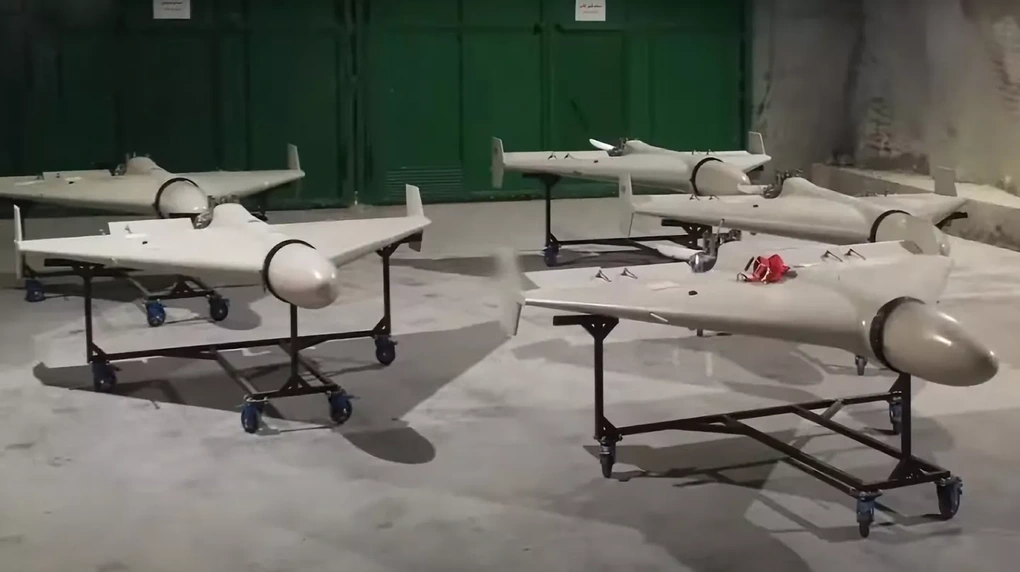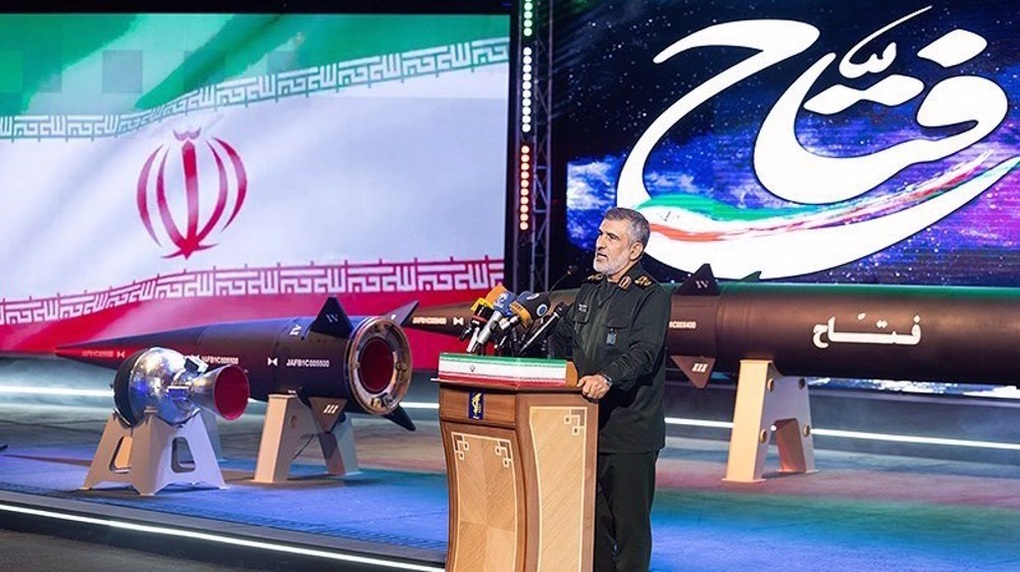Iran revealed its "trump card" to prevent escalation of tensions with the US and Israel
After Iran's recent response with UAVs, ballistic and cruise missiles against Israel, there is a perception that Tehran has not yet unleashed its full potential and still retains its "trump card" to prevent the war from escalating. Tasnim - Iran's official news agency affiliated with the Islamic Revolutionary Guard Corps (IRGC) - published a report clarifying the retaliatory attack.
Tasnim - Iran's official news agency affiliated with the Islamic Revolutionary Guard Corps (IRGC) - published a report clarifying the retaliatory attack.
The report said that Tehran did not use its most sophisticated missiles in "Operation True Promise" to attack Israel on April 14, but only used older weapons combined with some upgraded missiles to attack Israel on April 14. exposing Israel's air and missile defense potential
The IRGC's raids on the night of April 13 and 14 - launched in response to Israel's attack on the Iranian consulate in Damascus on April 1 - achieved the goal of mapping the Syrian defense lines. Israel, at the same time, showed that Tel Aviv and its allies could not completely protect the military and intelligence sites targeted by Tehran, despite receiving 72 hours' notice.
Accordingly, the IRGC may have partly grasped Israel's strongest air and missile defense capabilities - supported by the US, UK, France and Jordan - through the use of both old and new tactics with many attacks. weaponry is increasingly sophisticated
As previously reported, last week's attacks began using the Shahed-136 UAV, which flies toward the target at a speed of about 185km/h, is noisy and easily detected thanks to its wing motors. simple fan.
According to Tasnim, the more advanced Shahed-238 - a jet-powered variant of the Shahed-136 - has not been used, refuting some media claims that these new generation UAVs has been deployed. According to OSINT, the Shahed-238 has a reported maximum speed of at least 500km/h (some sources say 800km/h) and has a radar-absorbent coating.
According to OSINT, the Shahed-238 has a reported maximum speed of at least 500km/h (some sources say 800km/h) and has a radar-absorbent coating.
The first strike was designed to distract Israeli and allied forces, forcing them to spend time searching for and intercepting Shahed-136s in the night sky and engaging them instead of conducting a immediate counterattack on Iran.
After the UAVs, the IRGC moved on to a second attack, which saw the firing of the Paveh - a long-range surface-to-surface smart cruise missile with foldable wings and the ability to change course and target mid-flight. Fired from launchers mounted on mobile truck chassis, these jet-powered missiles have a reported range of over 1,000km (other sources say 1,650km) and speeds ranging from 700 to 900km/h.
The third and final attack began after midnight on April 14 Iranian time, and included the firing of ballistic missiles, which entered Israeli airspace minutes after launch.
Tasnim's analysis indicates that the IRGC has not played its "trump card" in using its most advanced missiles, including the Sejjil, Khorramshahr, Kheibar Shekan 2 or its new hypersonic Fatah series missiles. them, during attacks. Instead, based on consideration of missiles with sufficient range and power characteristics, the report notes that the IRGC may choose Dezful, Qiam-2, Rezvan, Kheibar Shekan 1, Emad and Qadr missiles. to attack. These missiles have a range of 1,000 to 1,950km, and all except the Dezful and Kheibar Shekan use liquid-fueled propulsion.
Instead, based on consideration of missiles with sufficient range and power characteristics, the report notes that the IRGC may choose Dezful, Qiam-2, Rezvan, Kheibar Shekan 1, Emad and Qadr missiles. to attack. These missiles have a range of 1,000 to 1,950km, and all except the Dezful and Kheibar Shekan use liquid-fueled propulsion.
The Farsi version of Tasnim's report provides more details about the ballistic missile attacks, noting that due to the distance between the two countries, the Israeli military and its allies were unable to attack. Iranian missiles in their acceleration or cruise phase. The US Aegis is said to be the only anti-missile system capable of attacking Iranian missiles flying outside the atmosphere provided there is enough radar data. The report said that other systems of both the US and Israel, including Patriot, THAAD, Arrow-2 and 3, David's Sling and Iron Dome, are not capable of intercepting missiles at long ranges.
The report also confirms observations made by several independent military analysts this week: that the ballistic missiles Tehran used in the attacks "contained micro-warheads or fragmentation warheads", making the system Israeli and American air and missile defense systems have significantly more difficulty detecting and intercepting them.
This news agency explained: "In the published videos, such projectiles resemble a burning object or part of a downed missile, while this type of projectile will scatter in many different directions. when hit"
"The utility of the fragmentation warhead seems to be aimed at attracting the heat-seeking warheads of air defense missiles or ground-based infrared reconnaissance systems", forcing the defense force to open fire, leading to inventory depletion. missiles and ultimately overwhelm air defense forces.
Furthermore, Tasnim said, phenomena observed in the filming moments before warhead impact, including acceleration of the missile and change of direction as it descended on the target, appeared to indicate the use of Use rocket boosters or some other type of acceleration vehicle.
In the final analysis, the report said that while Israel "will need months or even years to upgrade its missile defense capabilities, Iran has yet to use its trump cards, such as missiles." Kheibar Shekan 2, Fattah 1, Fattah 2 and Khorramshahr 4 missiles. Furthermore, Tehran can quickly innovate its attack capabilities by only optimizing the missile's warheads, not redesigning them."
Tasnim warned that if the crisis escalated now, Iran could repeat the tactic it used last week on a larger scale, this time firing a first round of older missiles to overwhelm defenses. Israeli aircraft, then launched their most sophisticated missiles, making it impossible for opponents to intercept.










































